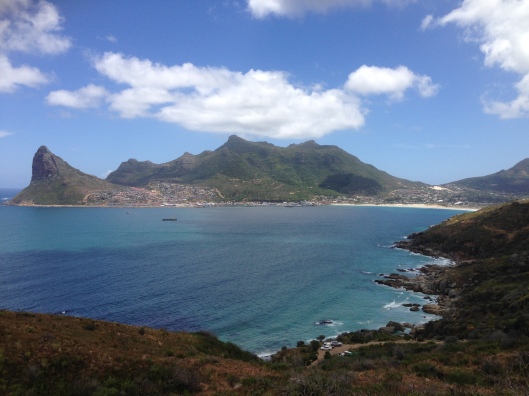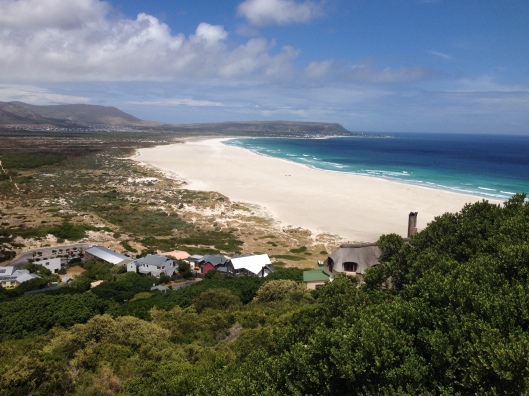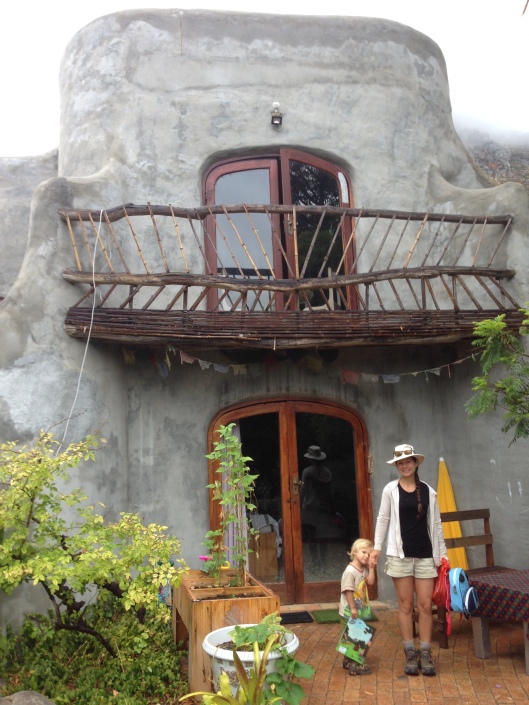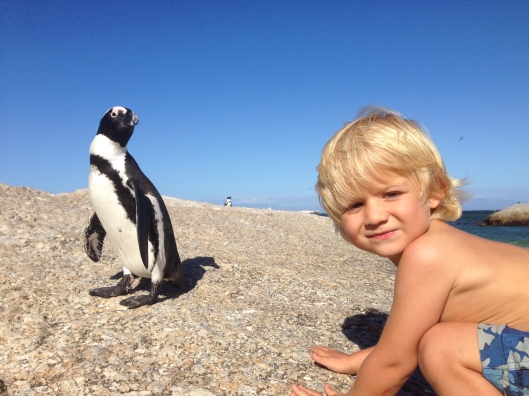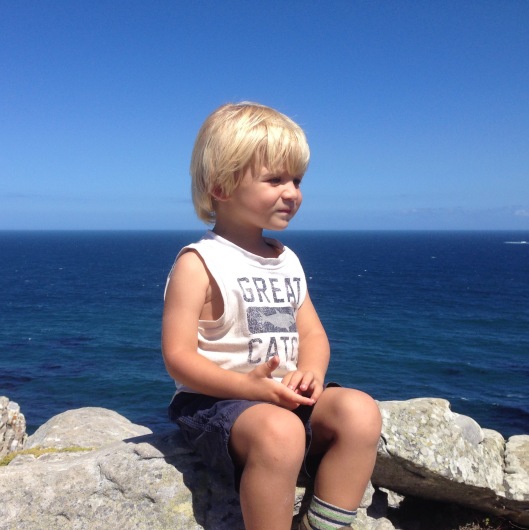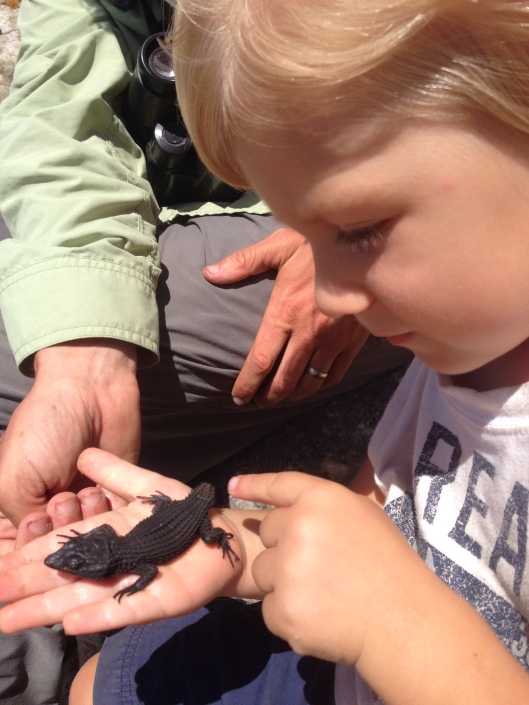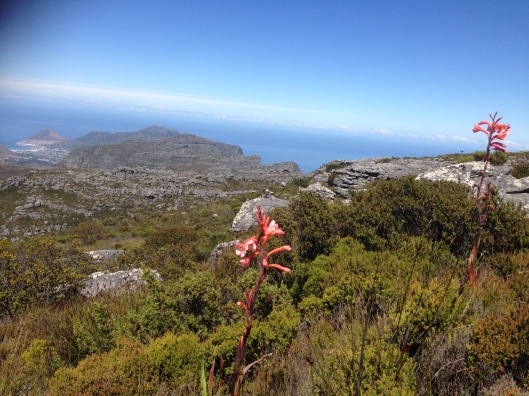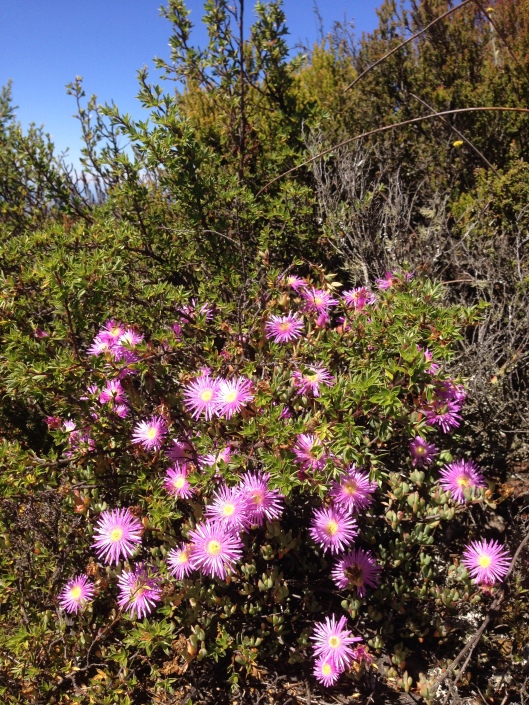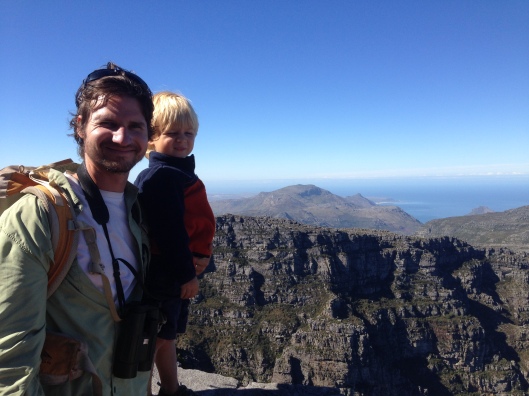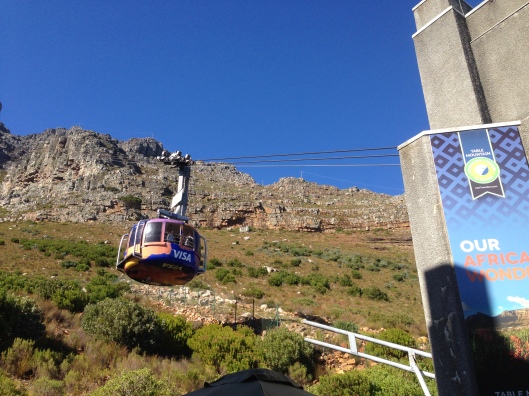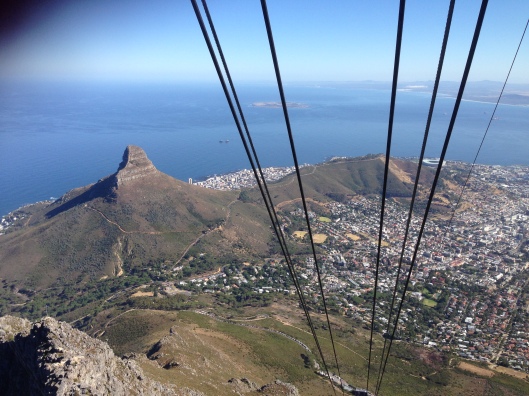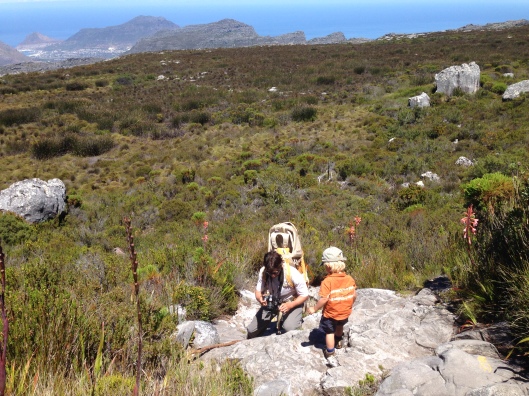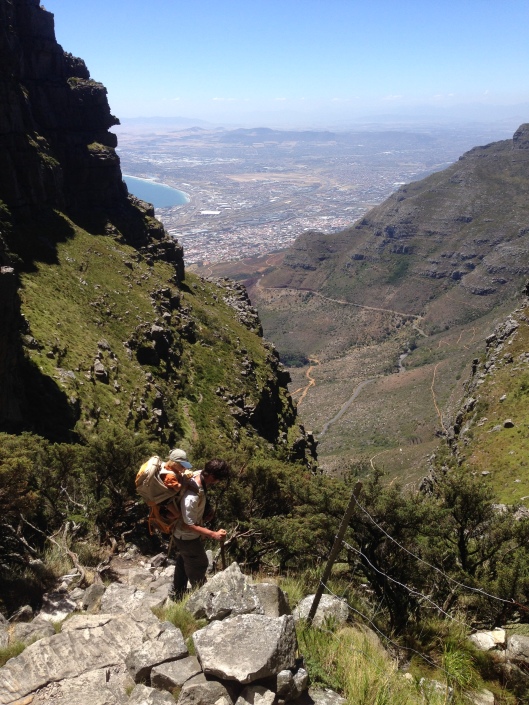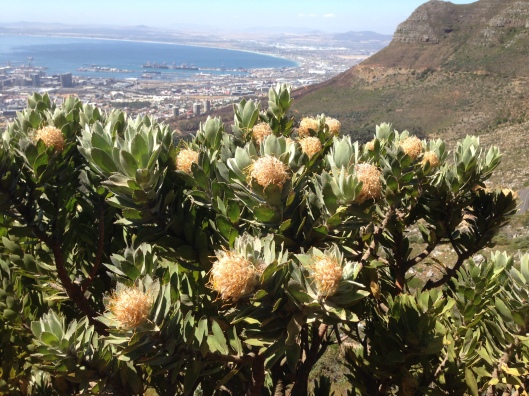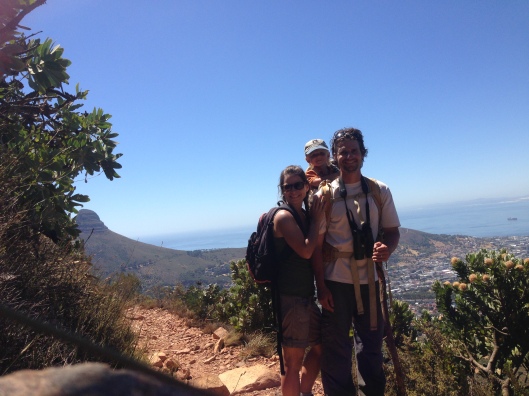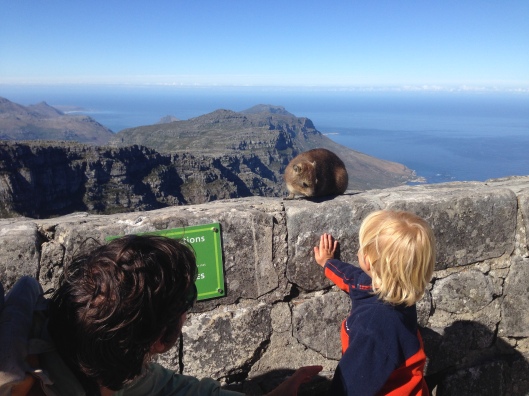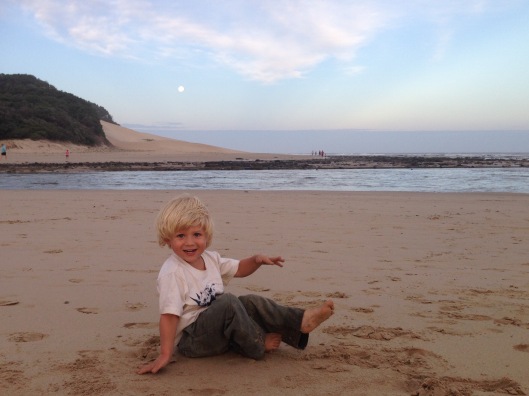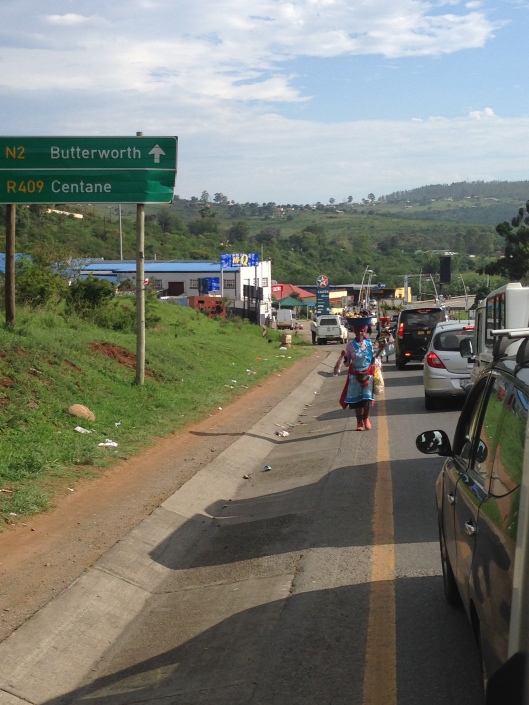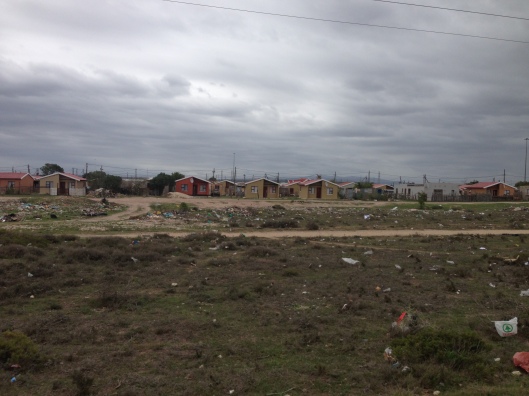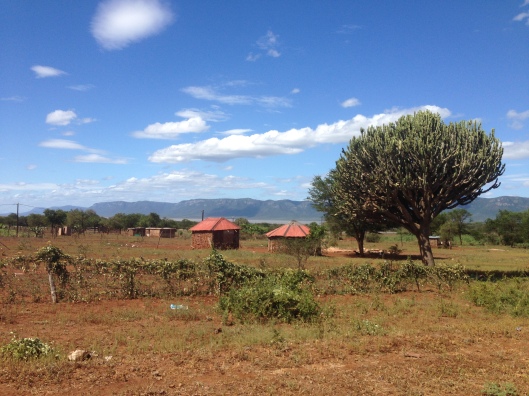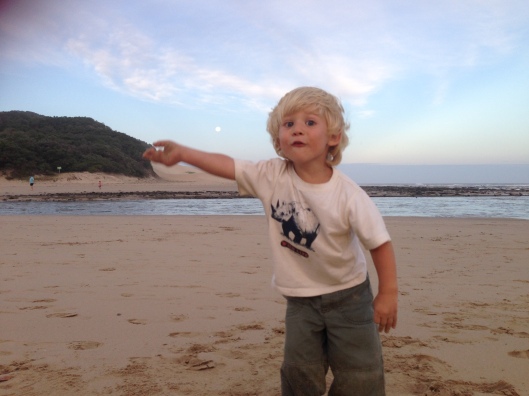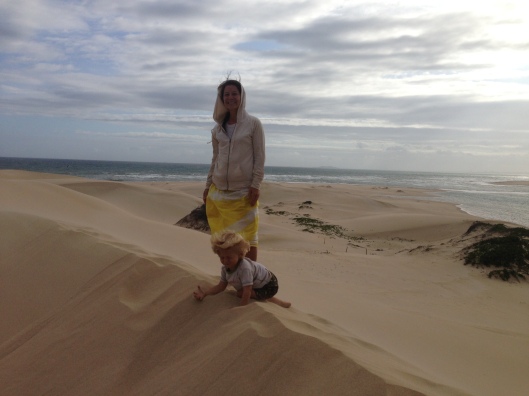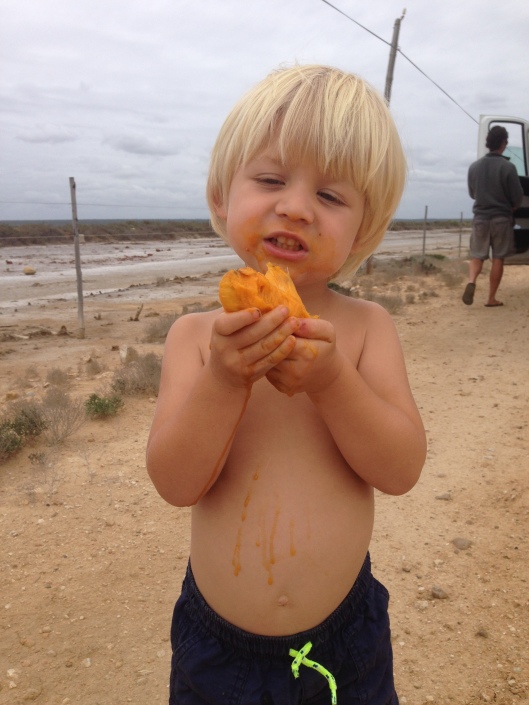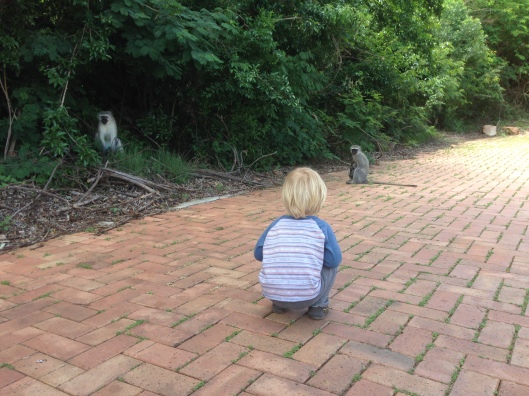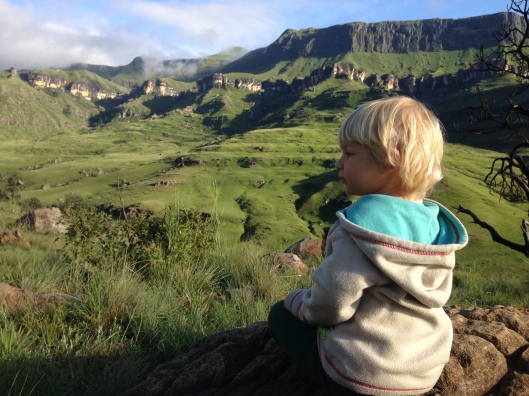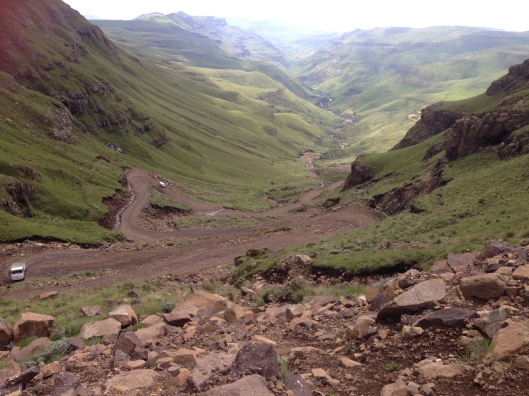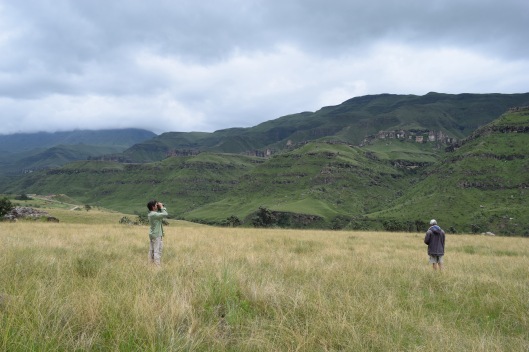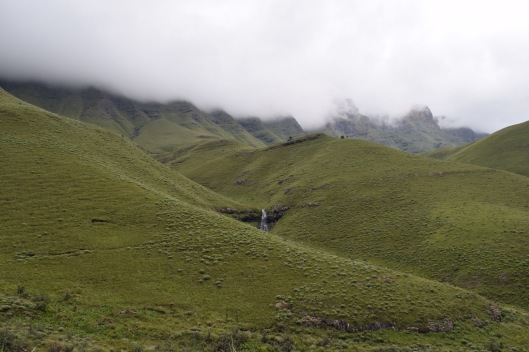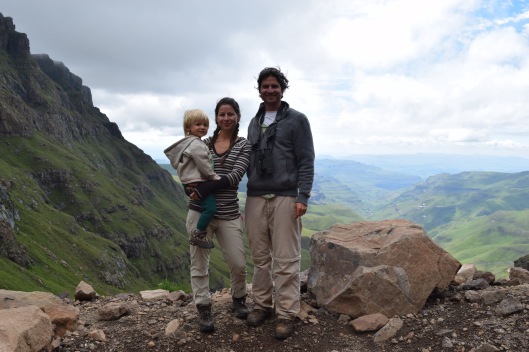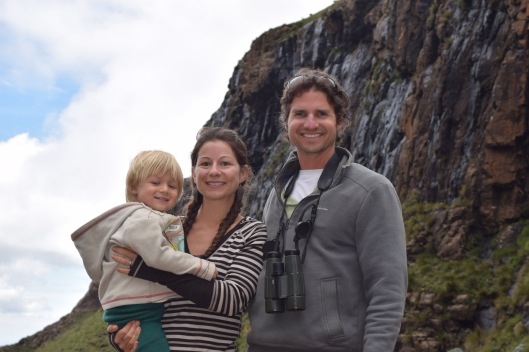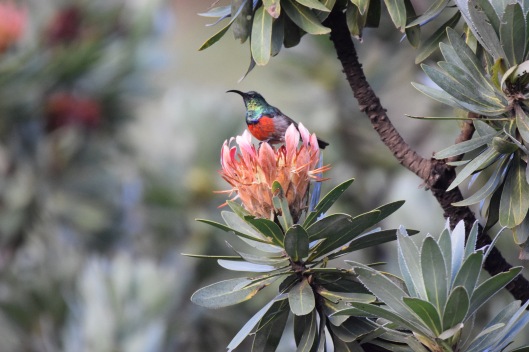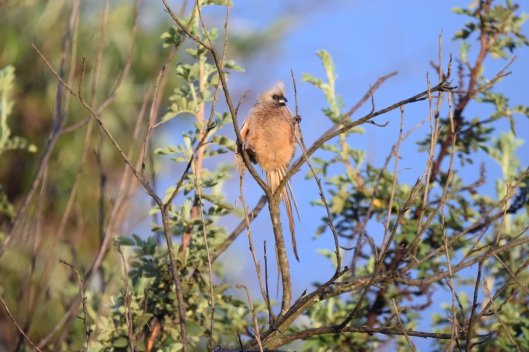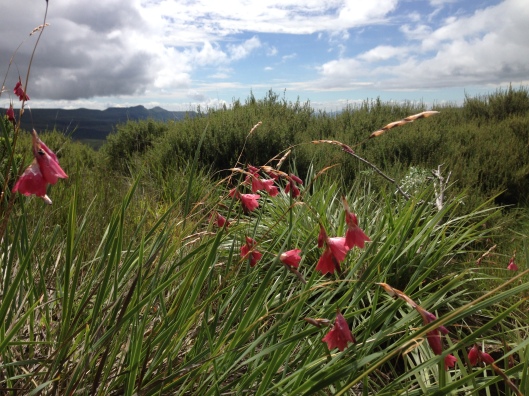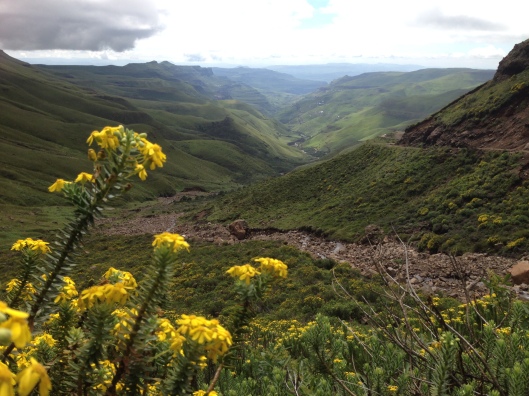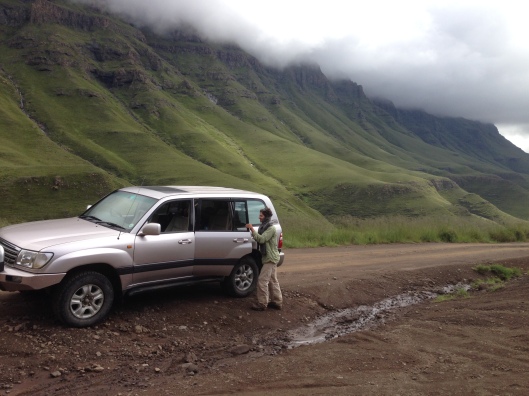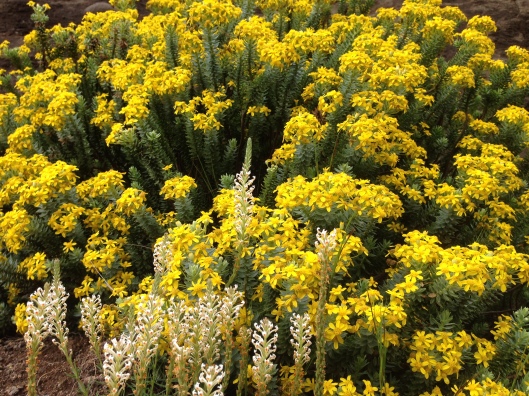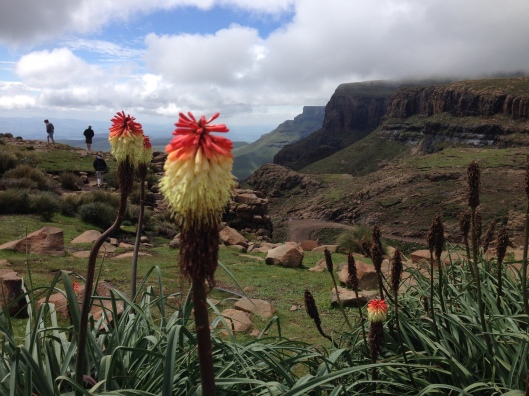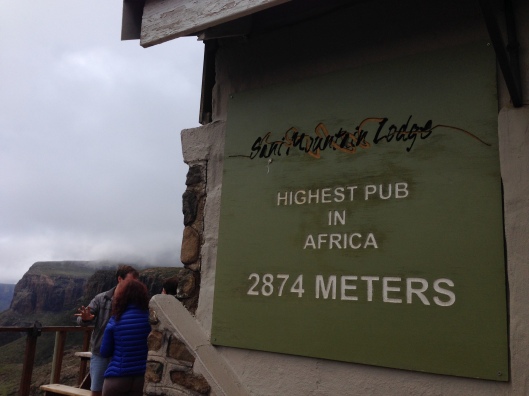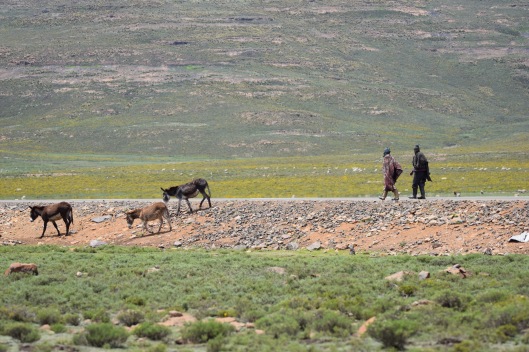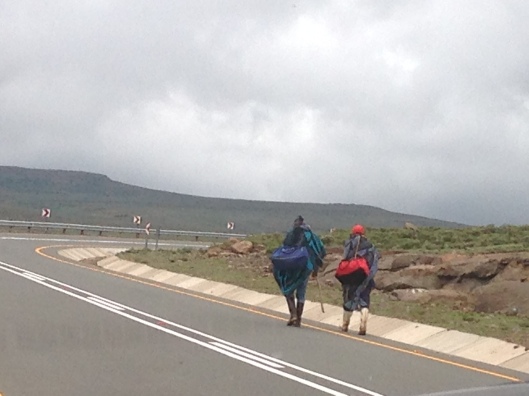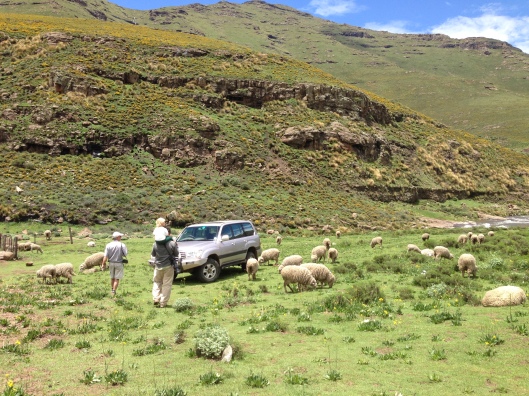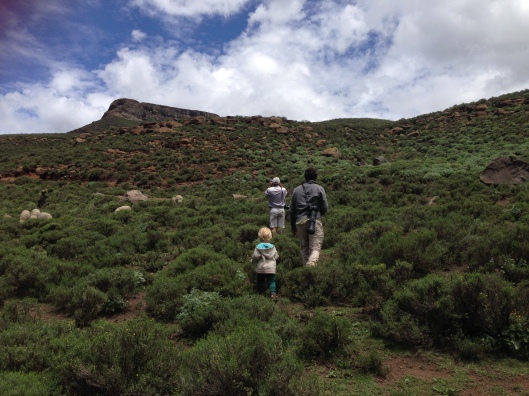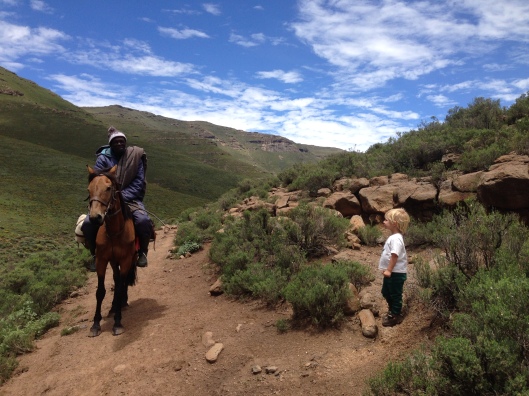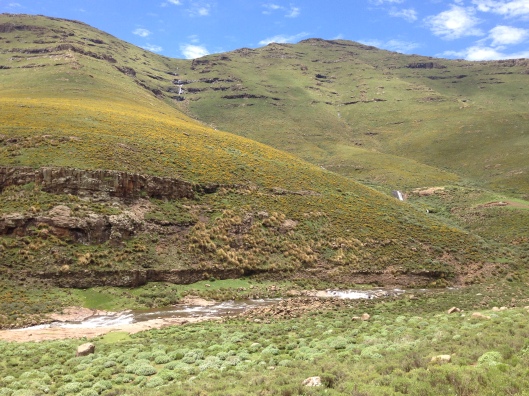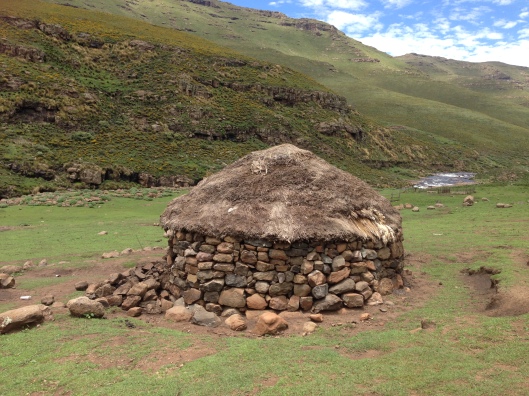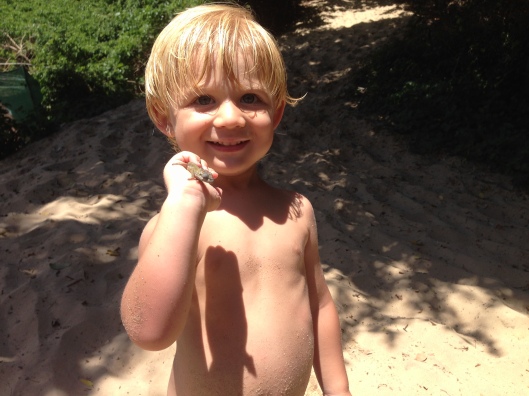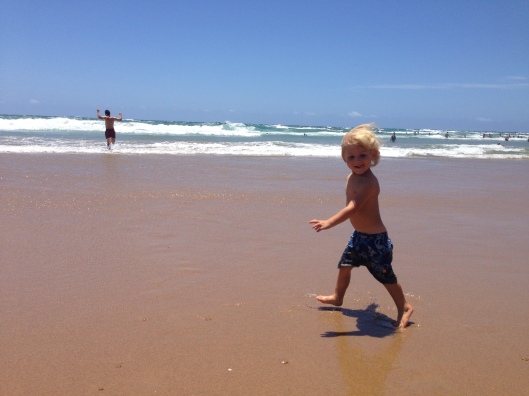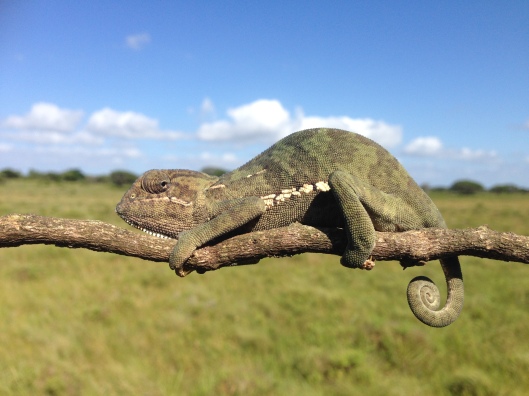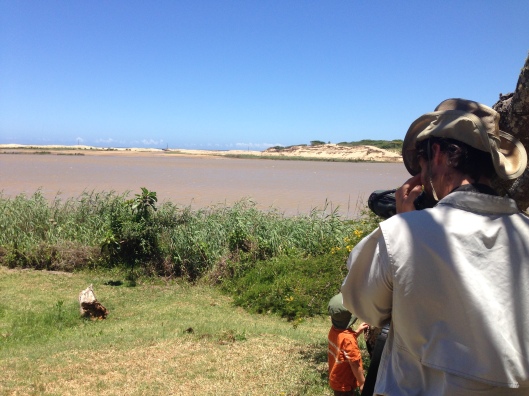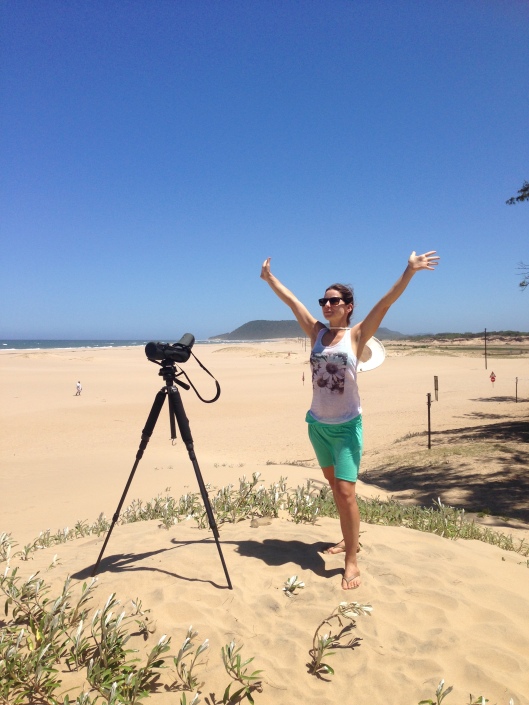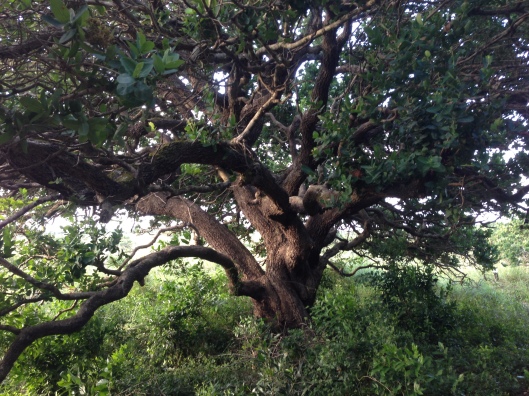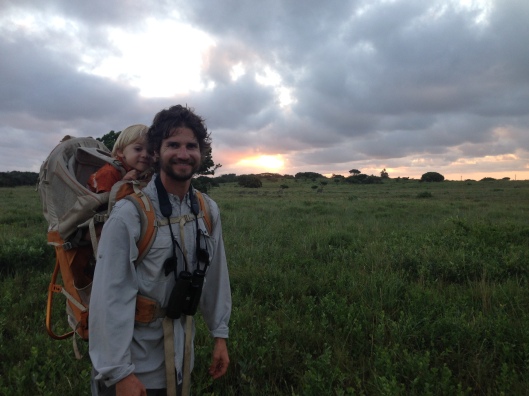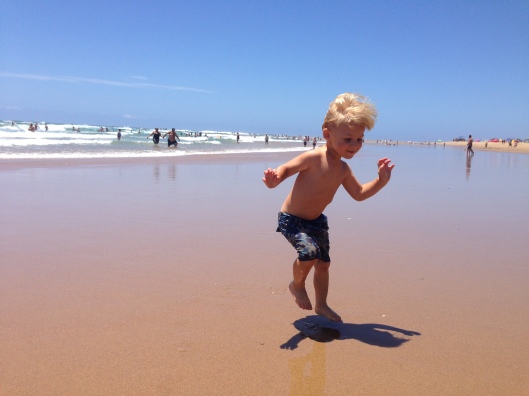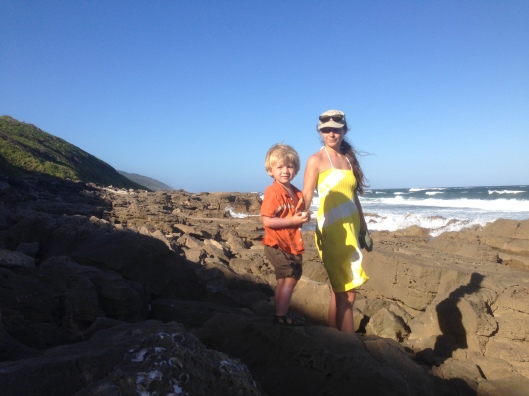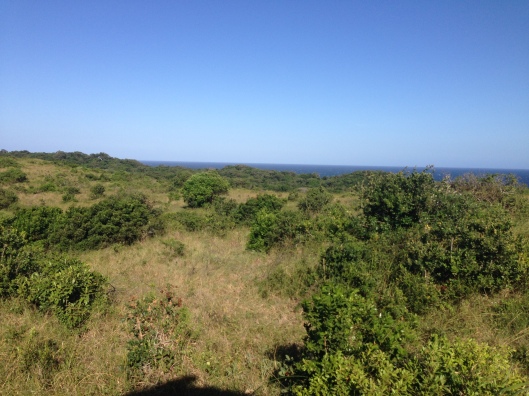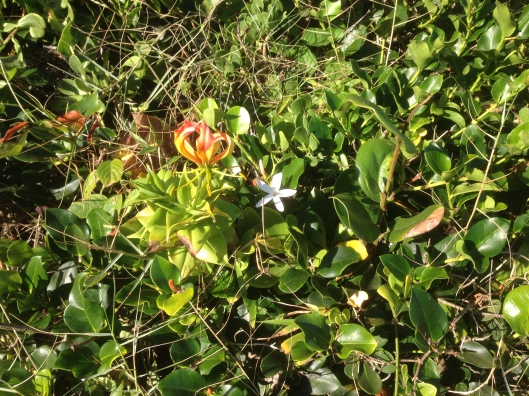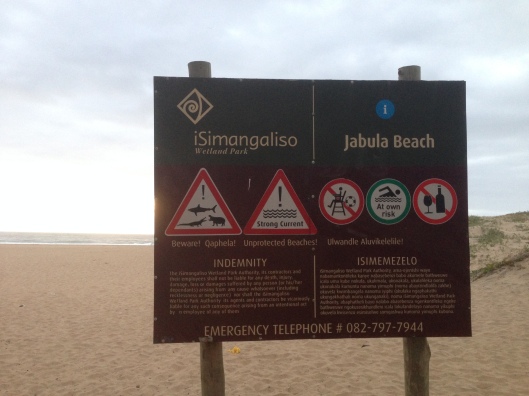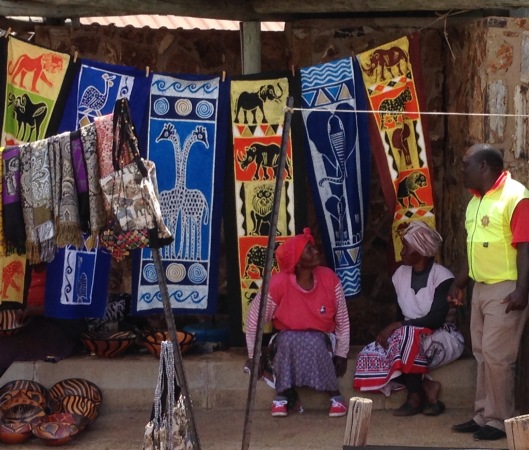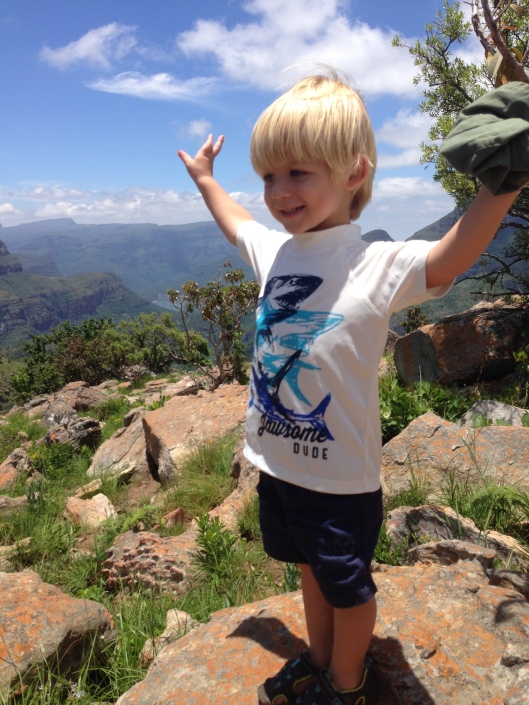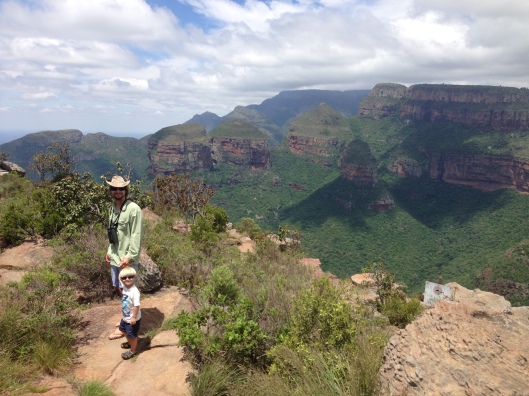We are back, nestled up in our cozy UP home, where things look no different from when we left in December. It’s still damp, cold and cloudy. The deciduous trees stand bare-leaved and the forest seems devoid of life. We patiently wait for life to slowly wake up and return to the north woods. I smile in anticipation of salamander dances, frogs croaking, birds rejoicing and wildflowers quietly creeping into bloom. Spring is my most cherished time of year.
Africa seems like a dream. It came and went faster than I would have liked. Now, all I can do is relive it through pictures, videos and journal entries. There is so much I wanted to blog about when we were on our journey, but time was limited and wifi was lacking. We are gearing up for another busy field season, but so long as the crawling critters are in hibernation, I have time to write and post pictures from our marvelous adventure.
We loved the the National Parks (NPs) in South Africa, a stretch of the trip in mid-January offered some of the finest.
I want to share our fast-paced journey through several memorable national parks in the heart of South Africa, including Addo Elephant NP, Mountain Zebra NP, The Karoo NP, Camdeboo NP, Wilderness NP and Bontebok NP. That’s 6 parks (plus 2 small reserves) in a week! Talk about an intense national park visit marathon! Time was always maximized and never wasted!
Addo Elephant National Park
Addo Elephant NP is a favorite among locals and if your into seeing massive pachyderms right outside your car window, then this park is for you! It is the 3rd largest park in South Africa and encompasses 5 distinct ecosystems, including a narrow band extending south into coastal dunes. It was established in 1931 to protect a small elephant herd that was close to extinction. Now there are more than 300 elephants in the park, along with Black Rhino, Cape Buffalo, Black Wildebeest and Lions. Animal spotting was ridiculously easy. We saw Meerkats, Yellow Mongoose, Warthogs, and Red Hartebeest straight away. We also had terrific encounters with elephants, including 2 youngsters playing and charging each other with sticks. Luckily, we didn’t run into any cantankerous bulls, which have been known to crush and upturn small cars if their space is not respected.
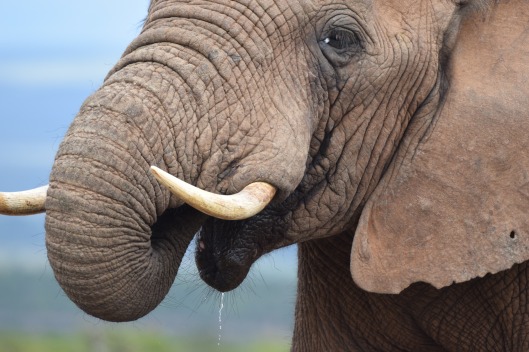
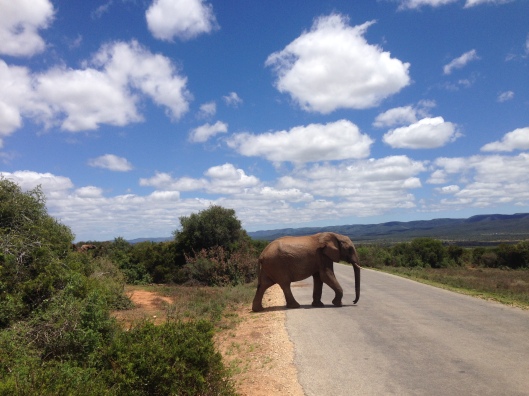
Mountain Zebra National Park
We crossed a small mountain range to the north and the land was transformed. It was gently rolling hills clad in prominent brown earth scattered with small sage green shrubs – our first introduction to the great Karoo! The Karoo is semi-desert and renown for its high diversity of neat succulent plants. It’s the only desert on earth that is designated as a global biodiversity hot spot. Karoo is the largest ecosystem in South Africa and is a transition between the lush coastal ecosystems comprising forest and fynbos and the dry Kalahari desert to the north. It superficially resembles dry areas in the USA and Australia; the only large structures rising off the plains are windmills bringing up life-saving water for livestock and people.

An iconic symbol of the Karoo – a windmill.
Mountain Zebra NP was lovely mountain scenery with rooiplaats (red plateaus) peppered in grazing mammals. We saw our first Black Wildebeest, Mountain Zebras (there are actually 3 species of Zebra in Southern Africa), Gemsbok, Grey Rhebok, Eland, Springbok and Bat-eared fox! And that’s not all! We were extremely fortunate to spot the very endangered and hard to find Black Rhino! Ryne’s number one animal he wanted to see! They feed high in shrubs/trees, opposed to the white rhino, who feeds, with his head hanging low, on ground vegetation. Sadly, rhinos are still being poached in national parks. Several hundred per year are being killed for their horns, in PROTECTED parks!!
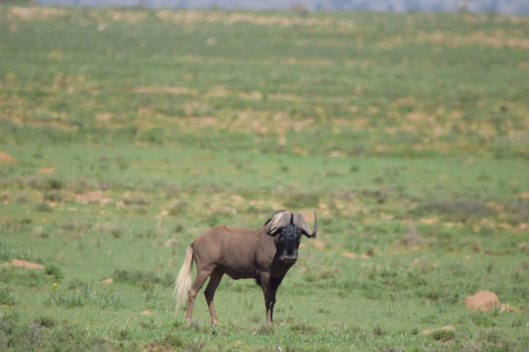
The Black Wildebeest with its gorgeous blonde tail on the rooiplaats.
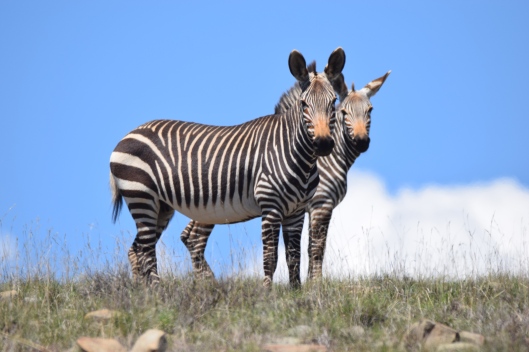
The ornate Mountain Zebra at Mountain Zebra National Park. Those mesmerizing stripes are simply beautiful!
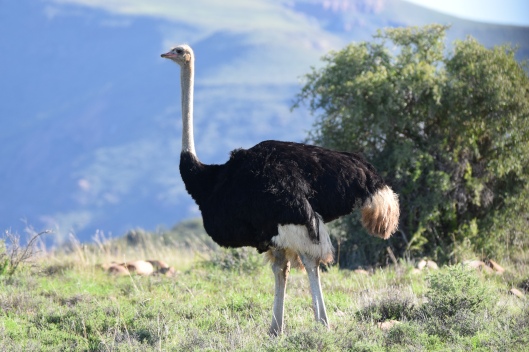
Common Ostrich
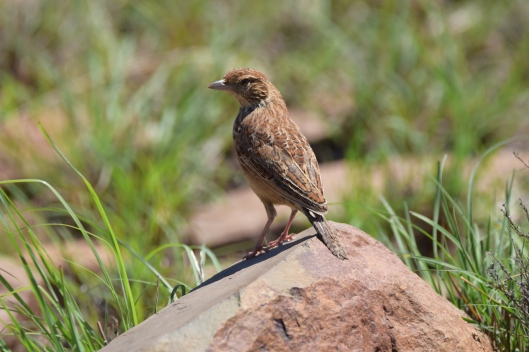
Eastern Clapper Lark. Larks are particularly diverse in Karoo, desert and grassland in South Africa.
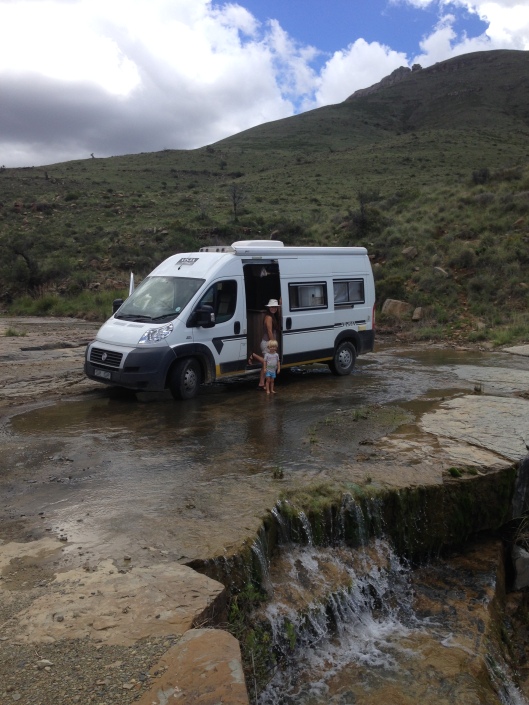
Had to get out to soak up the beauty of this stream and waterfall.
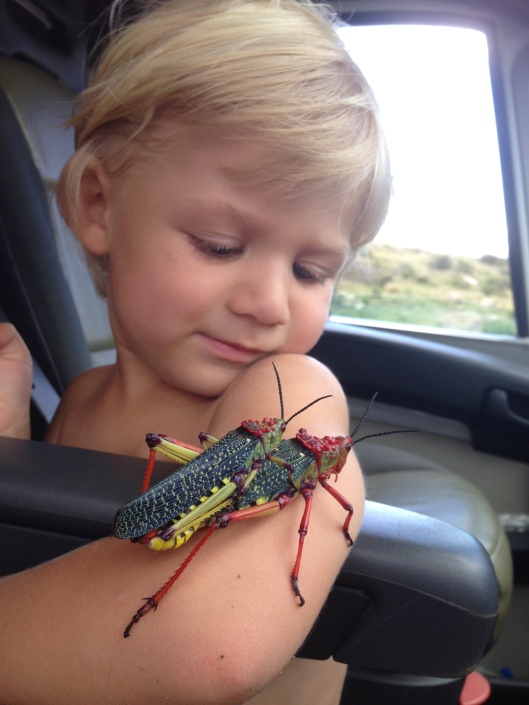
Ryne only has to be in the bush for a second before he comes back with the neatest critters, these are Giant Milkweed Grasshoppers (mating).
This park had an added bonus of long hiking trails around the rest camp, fenced off for our safety, allowing us to use our atrophied game-drive legs for a change. One trail went straight up a mountain and I was amazed at how easily Cypress stomped his way up the rocky slope.
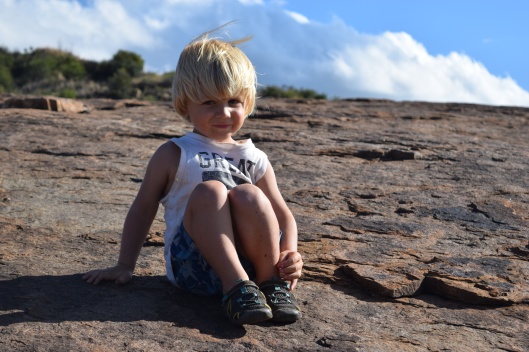
My little mountaineer waiting for Mommy.

Taking a much needed break from driving to go on a refreshing hike at Mt. Zebra Park
The Karoo National Park
The Karoo NP encompassed a dry, bone dry mountain range with deep shaded canyons. The hot, still air felt like we were stepping into an oven. The parched burnt-orange earth cracked and crumbled beneath my shoes. The air was so arid that my hair literally dried in 30 seconds. Ryne, who had a very minor cold, had a runny nose that instantly dried up! Temperatures reached between 36-38 degrees Celsius (close to 100 degrees F). Wildlife was not as conspicuous here as it was at other parks. Perhaps because of the heat. Waterholes were usually good for kudu, birds and tortoises. However, we did have unbeatable looks at Klipspringers, an antelope superbly adapted to life on granite rocks.
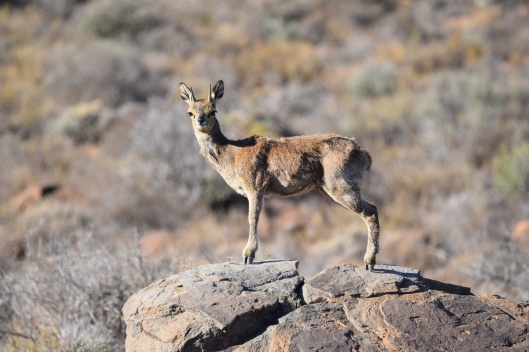
The handsome Klipspringer with tiny delicate hooves, perfect for springing from one rock to another, is a denizen of granite slopes.
The campground had nicely watered grassy sights, an oasis in the desert, which made it fantastic for tortoise and bird watching. Leopard Tortoises were plentiful and easily observed munching in their cloudland of fresh greens.

Leopard Tortoises reach an impressive size.
Camdeboo National Park
Camdeboo was fascinating geologically speaking and interesting with a diversity of aloe plants and shrubs covering the mountain sides. The valley of Desolation was very scenic with dolerite columns rising up from a precipitous canyon. The lookout over the steep crevice had no guard rails so I was a nervous wreck with Cypress being the clambering fool that he is.
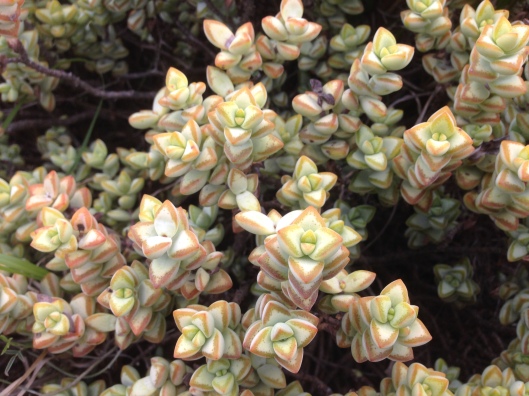
Neat succulent plant on top of the ridge
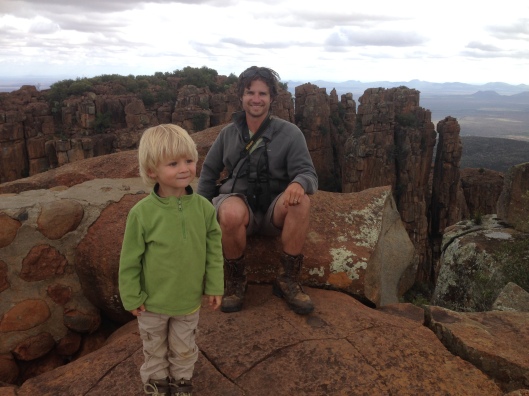
The volcanic dolerite columns rising up from the Valley of Desolation.
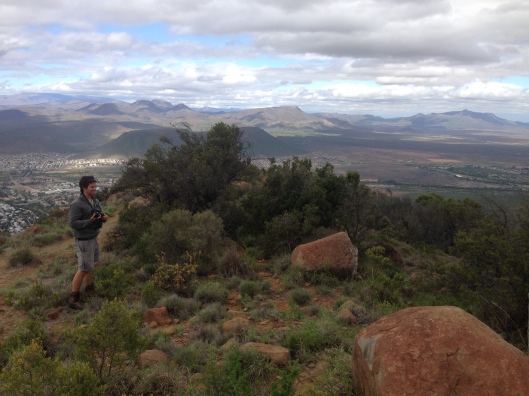
Admiring the flora and the plains over the Great Karoo.
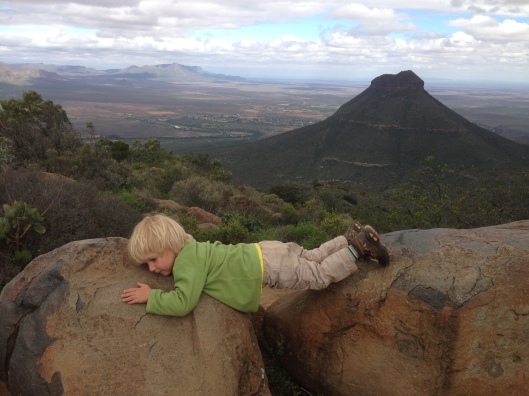
The Cypress Bridge
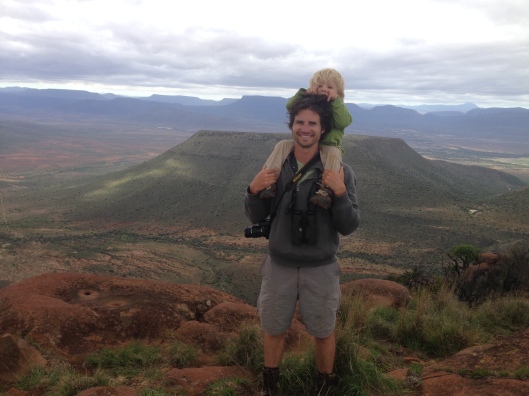
The scenic landscape of the Great Karoo
I will share some highlights from Wilderness NP, part of the greater Garden Route NP in my next blog post. The Garden Route was one of my favorite places we explored because its hard to beat beaches, lakes, streams, wetlands and ancient forest rich in biodiversity.

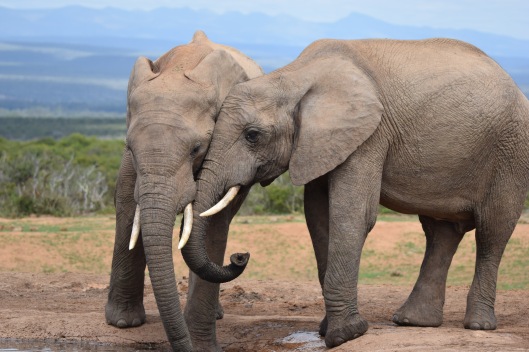


















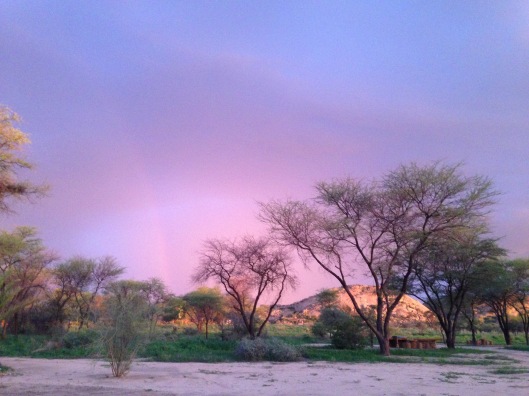
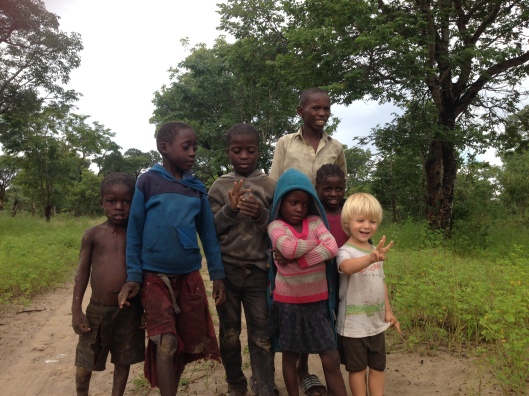
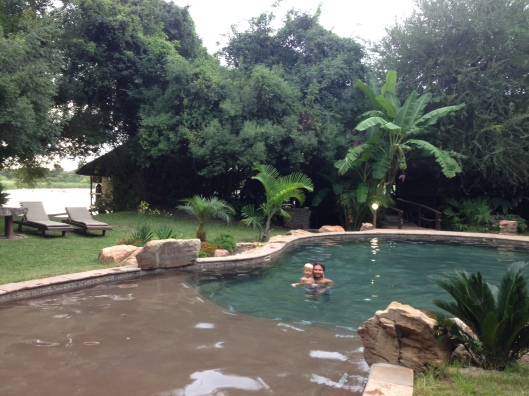
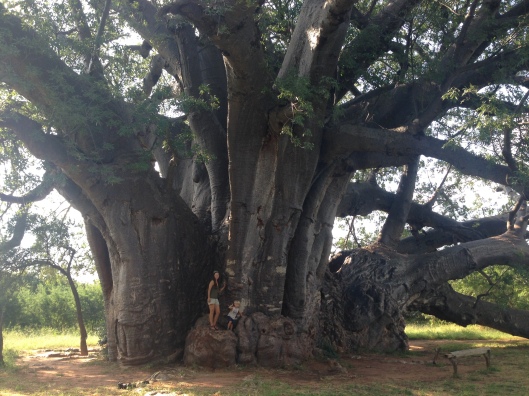
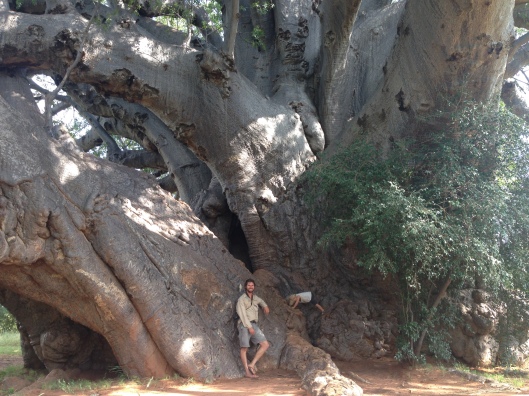
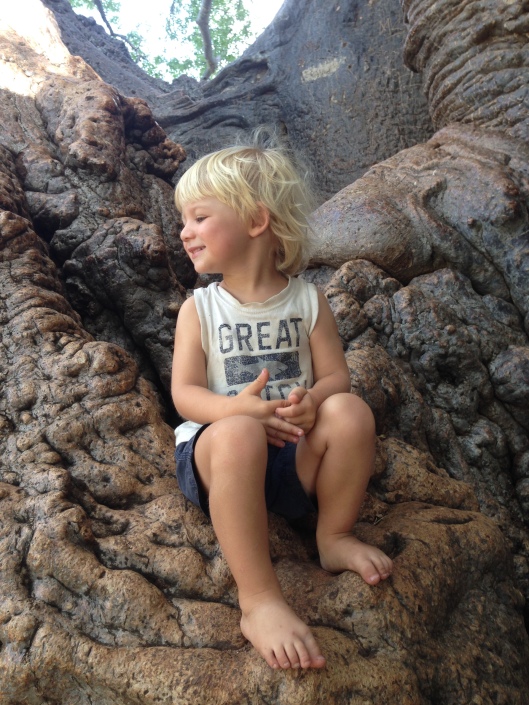
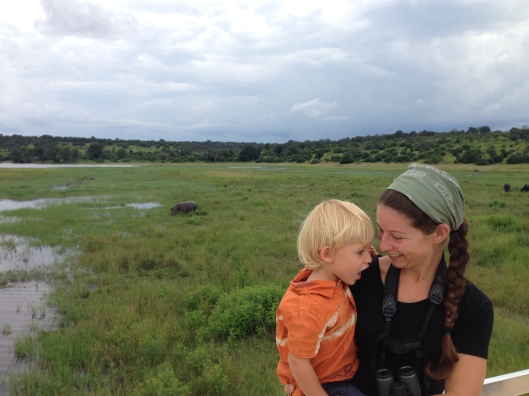
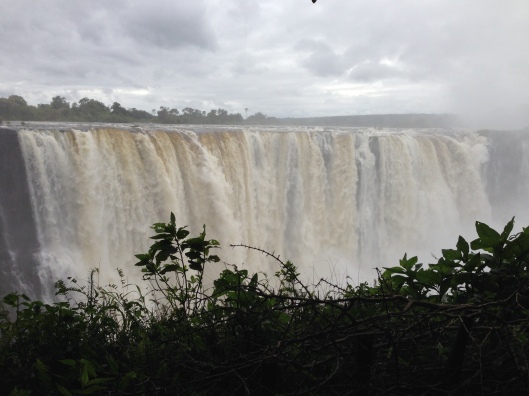
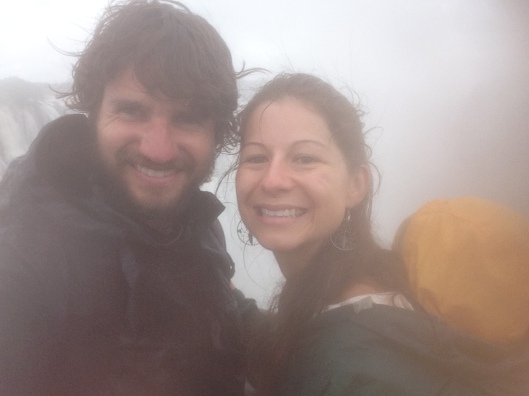
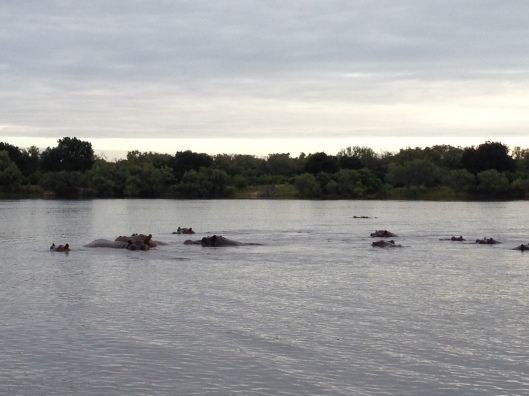
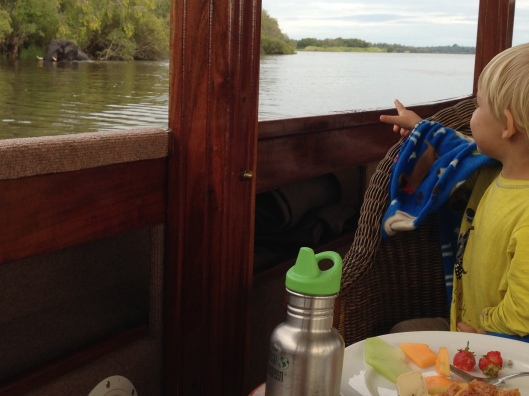
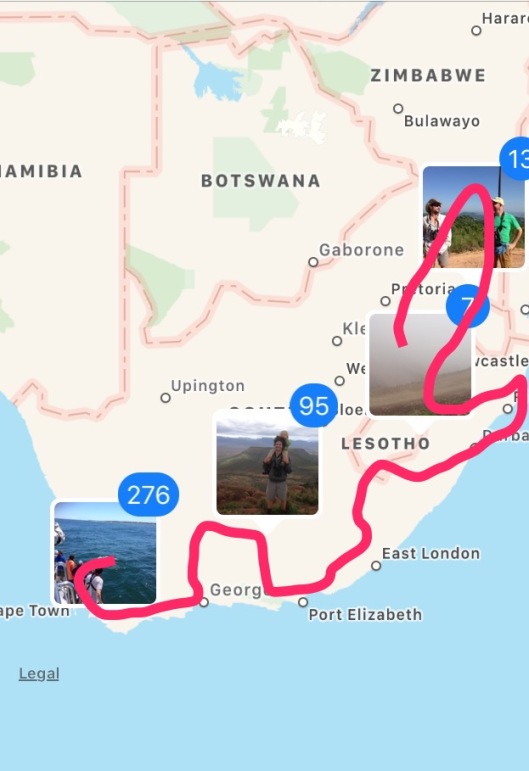
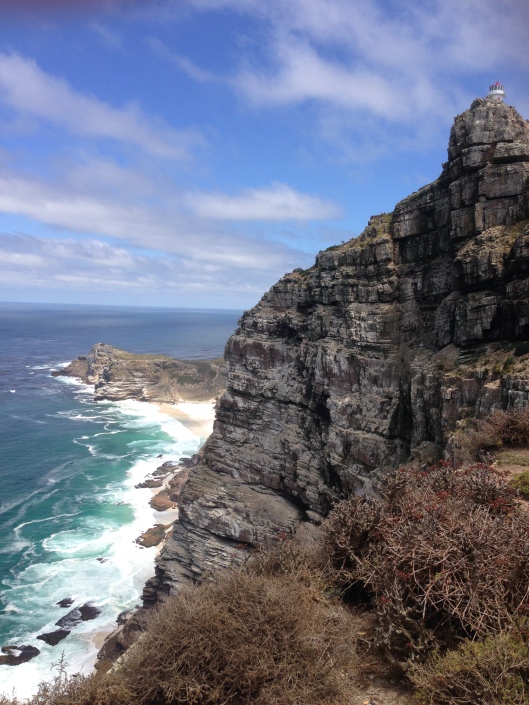
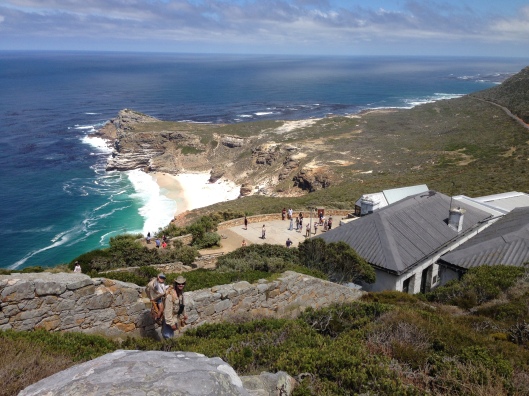
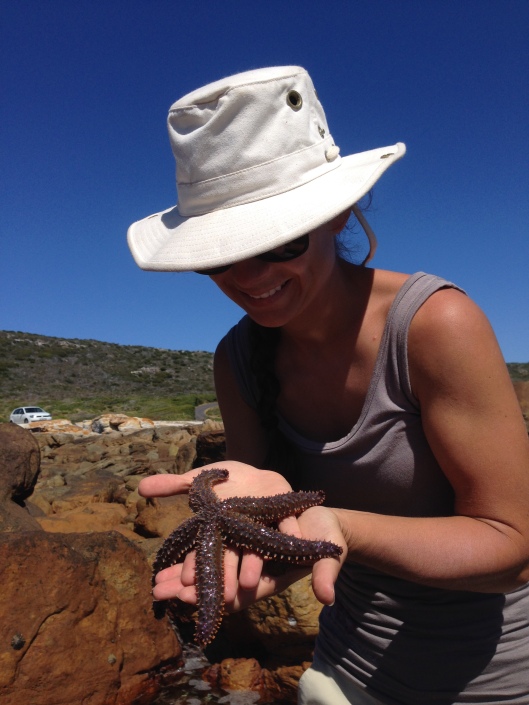
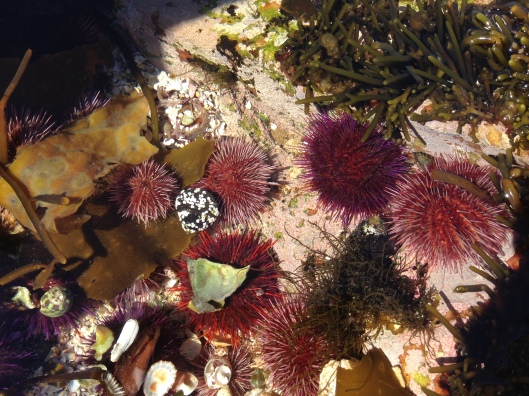
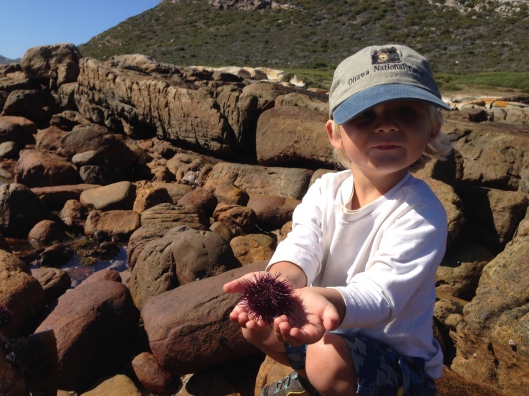
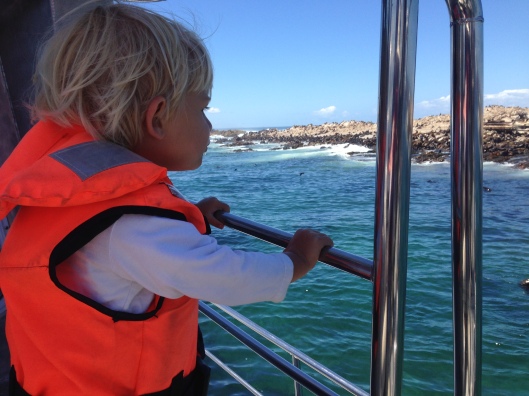
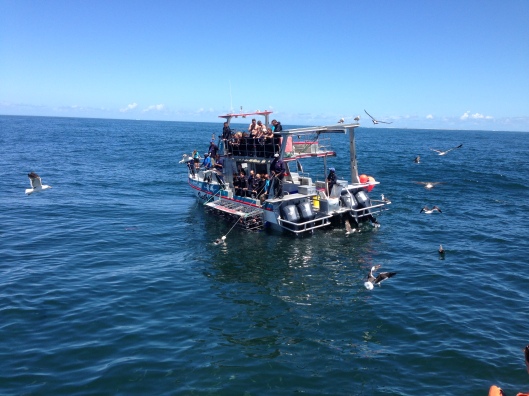
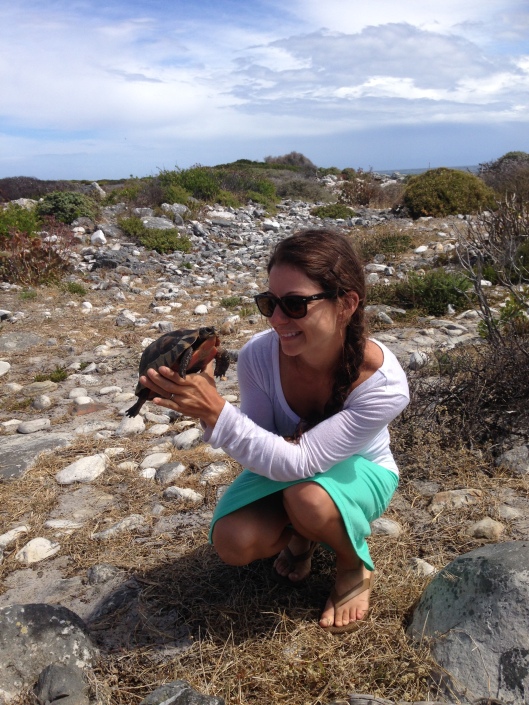 Angulate Tortoises were fairly common in the park!
Angulate Tortoises were fairly common in the park!